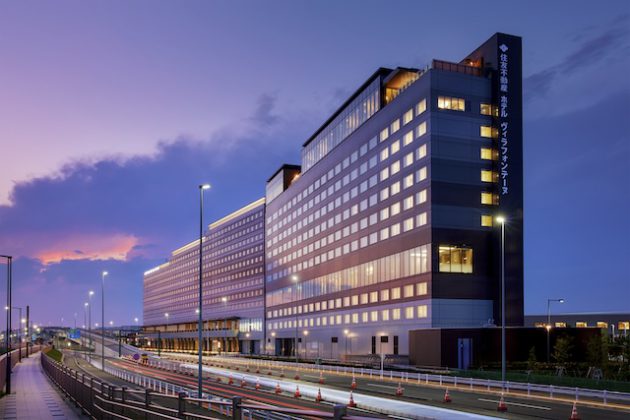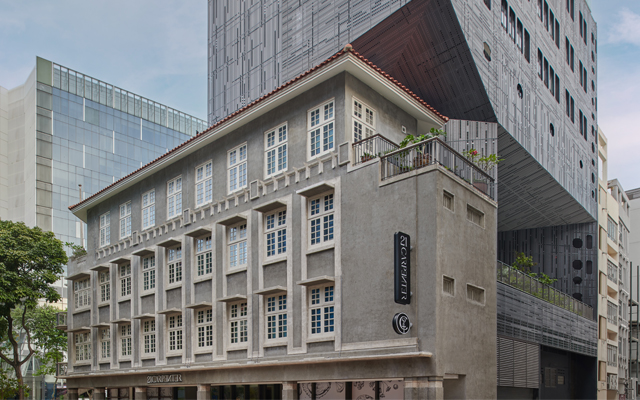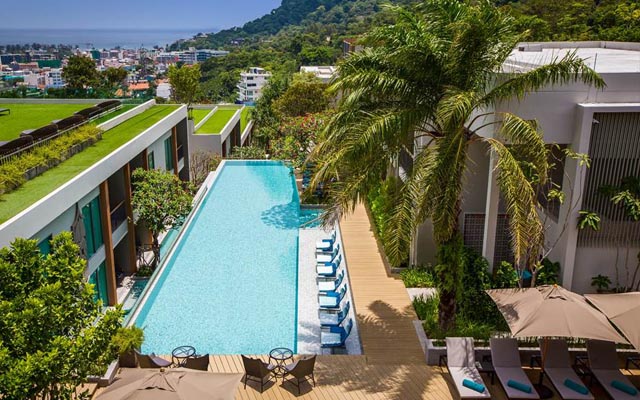Lee Cheh Hsien, divisional director, planning, Sentosa Development Corporation, understands that pushing for carbon neutrality by 2030 for the entire island is a monumental task, but remains confident in the progressive and relentless effort that his partners are displaying





















Sentosa is a beloved destination for locals and tourists alike, welcoming over 19 million guests annually pre-Covid.
Over the past two years, the pandemic has brought many sustainability concerns to the forefront. As the world moves towards living with Covid-19, it is expected that travellers will express an even greater preference for sustainable destinations.
As an island destination susceptible to the effects of climate change, Sentosa must play its role to push the boundaries of sustainability, aligning ourselves with the whole-of-nation movement to transform Singapore into a sustainable urban travel destination for travellers.
Since the island’s inception as a leisure destination in 1972, sustainability has been a tenet in the development of Sentosa.
For instance, critically-endangered Hawksbill Turtles have often come to nest on our beaches, and when they hatch, our team would measure and weigh the baby turtles before releasing them back to sea. Since 2019, we have been working with local experts and partners to ensure that the nesting grounds are protected and not disrupted by any new developments in the area.
Going forward, the next phase of our Sustainable Sentosa strategic roadmap will look to limit carbon emissions even further, and promote the consciousness of sustainability among Sentosa’s guests and businesses.
The roadmap serves as a long-term guide to align efforts and synergise resources to achieve outcomes in various key areas contributing to the island’s goals of achieving carbon neutrality by 2030, and becoming a globally recognised, certified sustainable tourism destination.
We are in the midst of exploring onsite carbon reduction opportunities through green infrastructure, such as solarisation and waste-to-energy plants, which will create circularity in managing our island waste and resources. We also aim to keep our environmental footprint small, through initiatives such as keeping our intra-island transport green. We have electrified our beach shuttles since 2020, trialled autonomous electric vehicles in 2018, as well as tested tidal energy solutions along the Sentosa Boardwalk in 2019.
As technology matures, we aim to stretch the limits of what is possible as we develop the Sentosa-Brani precinct as part of our Master Plan.
We also recognise that to engage our guests on sustainability, we need to leverage the island’s green, blue, brown and gold colours which we use to refer to our lush rainforests, marine environment, rich heritage, and sandy beaches. The aim is to bring sustainability from back-of-house to front-of-mind, by bringing guests up close to our environment. This integration of human with green spaces is also characteristic of Singapore’s identity as a City in Nature, allowing travellers to explore the country through sustainable modes of transport or sustainable travel experiences.
We are also working with the island’s businesses to preserve our heritage buildings and curate sustainable dining experiences with locally-sourced food and farm-to-fork initiatives, while unpacking circularity concepts.
Sentosa also welcomed our first carbon-neutral attraction in 2022, SkyHelix Sentosa.
Moving ahead, we expect more of such offerings to be extended as part of an island-wide effort to engage guests on sustainability.
Who are the partners SDC is working with on this sustainability journey?
As part of the Sustainable Sentosa strategic roadmap, we launched the Sentosa Carbon Neutral Network (SCNN) with a collective aim to achieve Sentosa’s carbon neutrality by 2030.
Comprising 19 members which include hotels, attractions and dining establishments on the island, SCNN will implement various initiatives from energy efficiency solutions to renewable energy and smart sourcing, with the collective potential to reduce carbon emissions by up to 30 per cent compared to 2019 baselines.
SCNN membership comprises large and small businesses that account for more than 90 per cent of the island’s carbon footprint. This means they could collectively help us bring about the largest reductions in Sentosa’s carbon emissions. They also demonstrate how collaboration within ecosystems can generate new perspectives to develop solutions to lower our environmental footprint and provide guests with a sustainable experience.
We have been hugely encouraged by the progress of SCNN, whose members recognise the importance of sustainability from their customers’ perspectives. Through open and data-driven discussions among the members, we have identified new focus areas for action.
What checks are in place to ensure Sentosa hits its carbon neutrality goal of 2030?
We have engaged consultants to better understand Sentosa’s carbon profile based on a methodology that is streamlined to the hotel, attractions and F&B sectors. Through this data-driven approach, we helped businesses on the island understand the requirements of international standards like the Greenhouse Gas Protocol. This better enables businesses to measure and take actions to mitigate their own carbon footprint.
We are also exploring destination certification by the Global Sustainability Tourism Council so that we are benchmarked against best practices in the tourism industry. SDC has also begun publishing an annual Sustainability Report which outlines how we are progressing vis-à-vis our island-wide sustainability goals.
Surveys say travellers want to stay in sustainable accommodation and be more sustainable, but how many of such travellers actually walk the talk in the face of potentially higher prices?
Contrary to popular belief, the pursuit of sustainability can potentially result in better and more cost-effective solutions as technology and markets mature, which can then be enjoyed by consumers. For example, solar energy is already one of the cheaper energy sources available on the market today.
Increasingly, sustainable businesses are proving to be better businesses, from a risk, brand and bottom-line perspective.
During the recent SingapoReimagine Global Conversations forum, titled Reimagine Sustainability: Think Circular, Travel Better, where I was a panellist, I shared about how regulations and technology have evolved to underscore sustainability as a fundamental practice for managing enterprises, and how sustainable businesses will be in good position to capitalise on their advantage and pass on more value to their guests.
It is also important for topics like these to be discussed on platforms such as SingapoReimagine Global Conversations, where stakeholders and experts can come together to share ideas and insights on how businesses can become more sustainable.
While traveller purchase preferences will vary across a wide spectrum, it is undeniable there is clear movement of consumer preferences for sustainable options, especially among the younger audience. This shift in the needs of the post-pandemic traveller was identified at the first SingapoReimagine Global Conversations forum last year, where it was found that sustainable travel experiences have climbed up the ladder of priorities when travellers are deciding where they want to visit.
Ultimately, we want to engage all our guests through differentiated leisure offerings to encourage them towards a sustainable lifestyle. These efforts include creating a greater appreciation of how a green hotel operates, highlighting nature and heritage offerings, or providing carbon-reduced or carbon-neutralised event options.
How is Sentosa planning to promote sustainable consumption habits among visitors?
Over the past two years, we have seen an upsurge in interest in Sentosa’s nature and heritage. Tapping on this renewed interest, we have also invested more effort into raising awareness of the need to protect our habitats.
An example of these efforts is guided tours to Tanjong Rimau, a pristine rocky shoreline on the western side of Sentosa which is home to thriving intertidal biodiversity, where we highlight the importance of conservation. We are heartened by the strong public interest in this activity.
Earlier in February, we also saw the gazetting of Fort Siloso as Singapore’s 74th National Monument. The Fort, which is Singapore’s best-preserved 19th-century fort, has also seen a resurgence in interest, with guests wanting to experience the rich history and heritage of the site.
Building on the interest of Fort Siloso, we have worked with universities and fellow government agencies to carry out nature and heritage conservation research at the fort, as well as education and outreach efforts with schools and communities to educate the public on its significance.
As the result of a three-year collaboration with the National Heritage Board, we recently launched the Sentosa Heritage Trail. The trails allow guests to discover the island through self-guided walks, navigating various heritage markers that will enrich guests’ knowledge of Sentosa’s history.